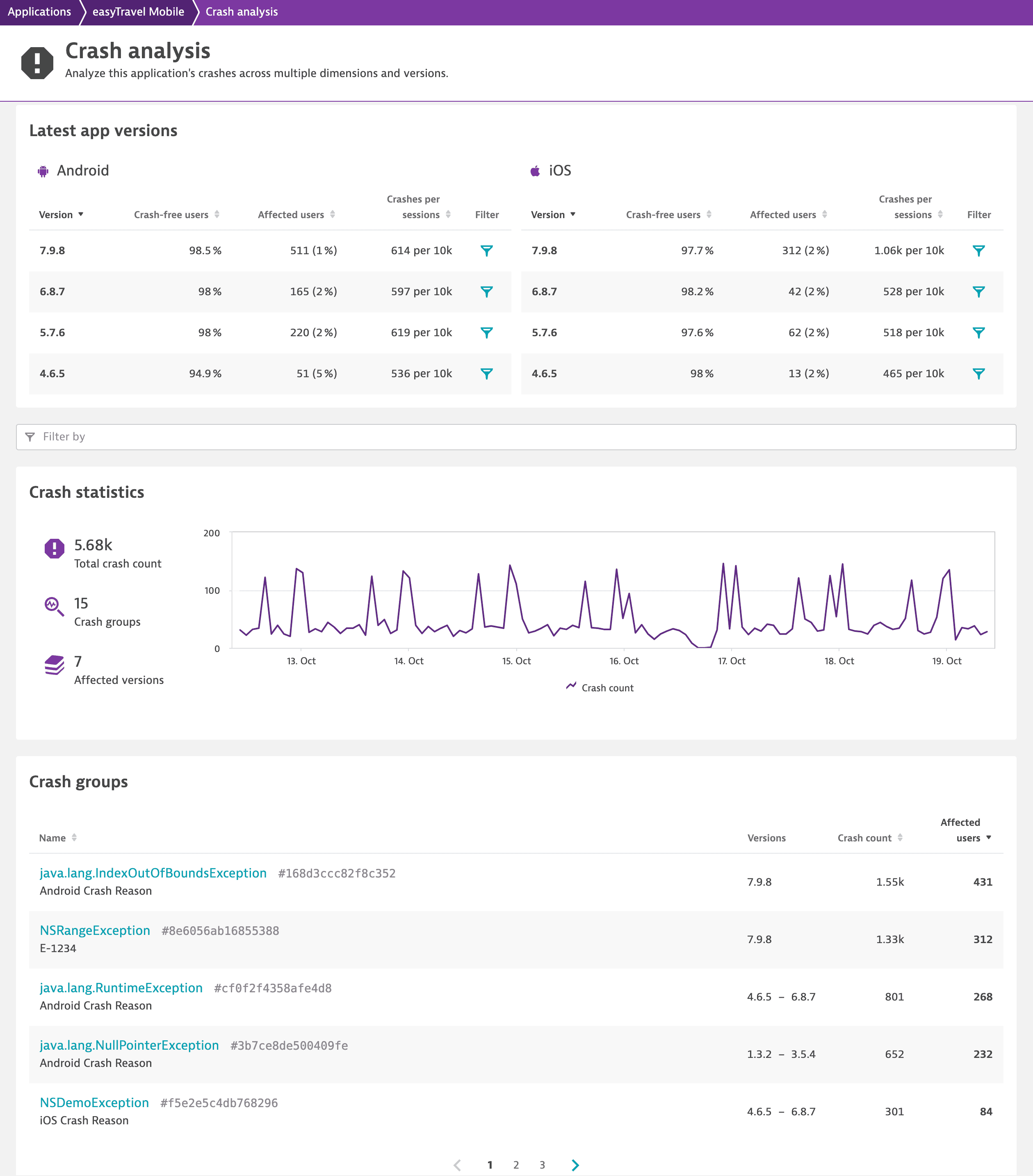Understanding App Crash Reports: A Detailed Guide
When it comes to maintaining high-quality mobile applications, app crash reports play a crucial role. These reports provide developers with valuable insights into why their apps are crashing, enabling them to fix bugs and enhance the user experience. In this article, we’ll delve into what app crash reports are, why they’re important, and how to leverage them for better app performance.

What Are App Crash Reports?
App crash reports are detailed logs or summaries of events that occur when an app stops functioning unexpectedly. These reports typically include information about the device, operating system version, app version, and the exact location in the code where the crash happened. Essentially, they are the first step in identifying bugs or issues that impact app performance.
For developers, crash reports are like user feedback that point directly to areas of an app that need attention. Without them, it’s incredibly difficult to troubleshoot issues, especially when the app isn’t exhibiting the crash behavior consistently.
Why Are App Crash Reports Important?
-
Identify Bugs: Crash reports allow developers to pinpoint the bugs that cause the app to malfunction. By analyzing the crash logs, developers can determine the root cause and fix it efficiently.
-
Improve User Experience: Frequent crashes lead to frustrated users. By addressing the issues highlighted in crash reports, developers can create a more stable and reliable app, enhancing user satisfaction.
-
Optimize App Performance: Regularly reviewing crash reports helps in maintaining the app’s performance. Over time, crash data can identify areas for optimization, ensuring smooth and continuous operation.
How App Crash Reports Are Generated
Crash reports are automatically generated by mobile platforms like Android and iOS when an app crashes. These reports are stored in a log file that includes various types of information such as:
-
Crash Logs: A detailed description of the crash, including the stack trace and error codes.
-
Device Information: Information about the device on which the crash occurred (e.g., model, OS version, etc.).
-
App State: The condition of the app when the crash happened (e.g., open activity, background state, etc.).
Developers typically use crash reporting tools like Firebase Crashlytics or Raygun to collect and analyze these reports.

The Key Components of App Crash Reports
When analyzing crash reports, there are several key components that developers should focus on:
1. Stack Trace
The stack trace is the sequence of function calls that led to the crash. This part of the crash report is crucial because it helps developers trace the problem back to the specific line of code that caused the issue. If you’re a developer, understanding the stack trace is essential for debugging.
2. Device Information
Crash reports include details about the device on which the crash occurred, such as the device type, OS version, and model. This data helps developers determine if a crash is device-specific or happens across multiple platforms.
3. Crash Type
Crash reports typically categorize crashes into various types, including:
-
Fatal Crashes: Crashes that result in the app completely shutting down.
-
Non-Fatal Crashes: Issues that cause some parts of the app to malfunction but don’t fully close it.
4. Reproduction Steps
In some cases, crash reports include steps to reproduce the issue. This is incredibly valuable for developers as it provides a clear path to replicate the crash and pinpoint the issue more effectively.
How to Collect App Crash Reports
The process of collecting app crash reports varies depending on the platform you’re using. However, there are some general tools and methods available:
-
Firebase Crashlytics: This is a popular tool for collecting and analyzing crash reports for both Android and iOS apps. It provides real-time data, allowing developers to fix issues as soon as they arise.
-
Raygun: A crash reporting and error tracking tool that helps developers monitor and resolve issues quickly. Raygun offers detailed crash diagnostics and integrates with various frameworks and platforms.
-
Sentry: An open-source error tracking tool that captures crash reports and provides detailed diagnostics. It’s a great choice for real-time app monitoring.
Best Practices for Handling App Crash Reports
1. Prioritize Critical Crashes
Not all crashes are created equal. Some crashes may affect only a small number of users, while others may impact a large portion of your user base. Always prioritize crashes that affect a significant percentage of your users.
2. Monitor Trends
Rather than fixing individual bugs as they arise, focus on identifying trends in your crash reports. If a particular issue keeps recurring across different versions of your app, it may point to a deeper problem that requires more extensive work.
3. Address Issues Promptly
A delay in addressing crash reports can cause a drop in user satisfaction. Ensure that crash reports are reviewed promptly and that fixes are released quickly, particularly for fatal crashes that cause apps to stop working entirely.
4. Implement Automated Testing
Automated testing can help catch crashes before they reach users. By running automated tests during development and deployment, you can identify issues early on and fix them before they cause problems.
Tools for Analyzing App Crash Reports
Firebase Crashlytics
Firebase Crashlytics is one of the most widely used tools for collecting crash reports in real-time. It provides detailed diagnostics and makes it easy to identify, track, and fix crashes. You can view stack traces, error messages, and the context of the crash, helping developers resolve issues quickly.
Sentry
Sentry is an open-source tool that allows developers to capture errors and crashes in their apps. It’s known for its ability to provide real-time error tracking, making it an essential tool for developers looking to improve their app’s stability.
Raygun
Raygun is another powerful crash reporting tool that helps developers track errors and crashes in real-time. It provides insights into the root cause of issues and offers detailed reports that help developers debug their apps faster.
FAQs About App Crash Reports
What is the most common cause of app crashes?
The most common cause of app crashes is bugs in the app’s code, such as memory leaks, null pointer exceptions, or problems with specific device configurations.
How can I prevent my app from crashing?
To prevent crashes, focus on thorough testing, including stress testing, load testing, and user acceptance testing. Regularly monitor crash reports to catch issues early and fix them promptly.
Why is it important to address crashes quickly?
Addressing crashes quickly helps maintain user satisfaction. Users who experience frequent crashes are more likely to abandon the app, leading to poor reviews and decreased app ratings.
Conclusion
App crash reports are invaluable tools for developers looking to ensure their apps are stable, reliable, and user-friendly. By effectively using crash reporting tools, developers can quickly identify bugs, improve app performance, and ultimately deliver a better user experience. Regularly reviewing and addressing crash reports should be an essential part of your app maintenance process.
For more information about app crash reporting tools, check out our detailed guide on the best tools available today.



